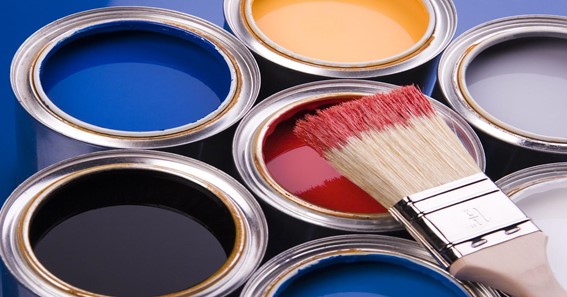Distemper and emulsion are the two most popular paint options. This guide will help you choose the right one for your home.
While getting the house painted, it’s common to encounter the emulsion-versus-distemper debate. If not a debate, the quest for information and the desire to use the right product on your walls will certainly make you ponder if emulsion paint is better than distemper. There are many ways to compare the two paint types, including durability, odour, and washability.
But first, it’s important to understand what emulsion really is. This is a class of water-based paint blends that offers a premium finish along with the ability to be cleaned regularly. The composition of emulsion is based on super-tiny polymers that trap pigments, and is partially solvent based, which means, made up of water. Some emulsions are equipped with additional properties. For instance, Berger interior paint’s Silk Glamour, a luxury interior emulsion, comes with added features like an elastomeric film for bridging cracks.
Distemper, on the other hand, is a more traditional substance used in paint jobs. It is relatively inexpensive but tends to be far less durable than other modern blends. Since distemper is not waterproof, it cannot be cleaned. They are often referred to as cement paints or oil-bound paints. Here are a few factors that form the basis of comparison between these two products.
Click here – What is a Novel Study?
How Durable is Emulsion Paint?
When we think of which is the best kind of paint, emulsions come to mind. This is because of the impressive life and fastness of colour they offer. The reason for their durability is the addition of acrylic or vinyl as binders, which are suspended in water, rendering the chemical compound known as emulsion. One of the best Berger paints for interior walls, Silk Glow offers additional features like anti-fade pigments, scratch resistance, and additives for bio-resistance, which extends the durability.
Distemper is far less durable than emulsion, largely due to its composition, which includes chalk, water, and pigment. They generally fade sooner than emulsions and don’t offer a very high degree of protection against water damage. But innovations have enabled new-age variants such as the Bison Acrylic Distemper, which also comes with a Green Pro certification.
Moisture and seepage are among the most common causes of fungal and algal attacks on your walls. It’s important to get the problem addressed at the root. Berger professionals use high-end tools like the Home Shield Moisture Meter to suggest scientific waterproofing solutions based on the type of damage, to remedy this commonly occurring problem. The durability of wall paint depends heavily on how well-protected it is from moisture.
Washability
Most paint types, including distempers, peel off if one tries to wipe stains off the walls. Since emulsion composition includes binders, they are washable and will retain the smooth, luxurious finish that they are known for. Many people consider emulsions one of the best paint types for interiors solely for this reason. This is especially true if there are kids in the house, who are eager to express their creativity on the walls. Such “art” can be removed by just wiping with a wet cloth if the walls are painted with emulsions.
Environmental and Health Considerations
Emulsions are easily one of the best ways to prevent choking from paint fumes while applying them to your walls. This is because they emit far less odour than their regular counterparts. The higher the fumes and odour emitted by paint, the higher is its VOC (Volatile Organic Compounds) content. This can cause serious health risks, ranging from mild headaches to severe allergies or asthmatic attacks.
While choosing an emulsion, ensure that it is low-VOC and packs formaldehyde-reducing capabilities along with bacteria-fighting properties. The greatest advantage of buying Berger paints for interior walls is that they are Green Pro certified and reduce two classes of major air pollutants – sulphur oxides and nitrogen oxides.
Choosing Between Emulsion and Distemper
So, how to choose the best interior paint? Should you care whether you’re choosing emulsions or distempers, as long as you’ve chosen the right colour combinations? Here are a few things to know:
- Distempers are used where the objective is to achieve a basic finish, whereas emulsions offer a luxurious finish in a wide range of textures, from silky smooth to metallic finishes and rich coats of vibrant colour.
- The affordability that comes with distempers is an incentive if you’re not looking for a long-lasting finish. Emulsions offer greater value when considering the durability, smoothness and washability aspects.
- Most distempers are OBDs (oil-bound distempers), which makes them bad for the environment and people who are exposed to their odour while painting. Emulsions, on the other hand, are water-based and a more eco-friendly and safer option for your family. You can choose Green Pro emulsions, which have a low-VOC count and no lead, mercury or chromium.
- If you live in a humid area, it’s a good idea to choose blends like Berger’s Silk Luxury Emulsion, which offer bio-resistance against algal and fungal damage.
If you are still unsure what to choose, get in touch with paint experts for online consultancy. You can also use Berger’s Product Finder to narrow down options using multiple filters. While emulsions have a greater coverage per unit area, you can use a Paint Calculator tool or ask painting professionals to give you an estimate.
Click here – How to Create an Amazing eCommerce Experience for Your Visitors
To Know Some Great Stuff Do Visit FindProsCons
To Know Some Great Stuff Do Visit Flagizzy
To Know Some Great Stuff Do Visit GetDailyBuzz

